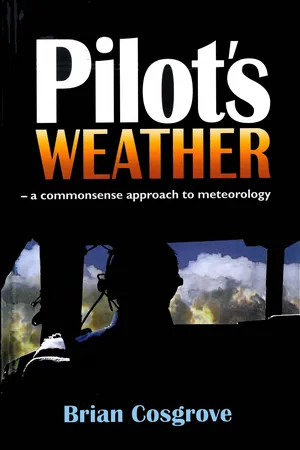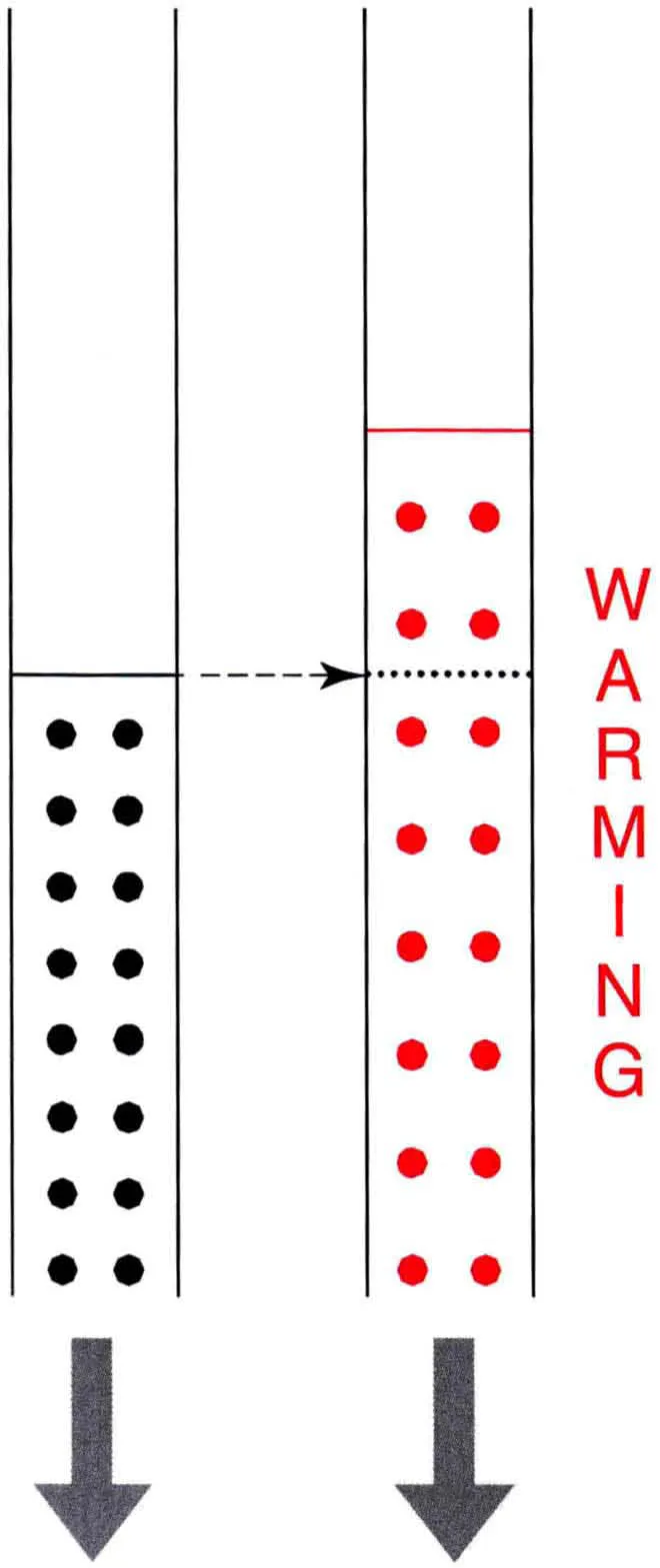
- 192 pages
- English
- ePUB (mobile friendly)
- Available on iOS & Android
About this book
This book breaks new ground in the presentation of what is and should be presented as a fascinating and vitally important part of a pilot's skill. Gone are the dreary old monotone drawings of isobars and fronts, endless graphs and reams of figures and in bounce full colour photos of what you actually see - clouds and cloudscapes that tell you instantly what's happening to the air around you. For those who fly aircraft and micros, gliders or kites, this book makes the weather make sense. "The content of the book deals comprehensively with all the topics likely to come up in the PPL exams, and more importantly tries, and succeeds, to weld them together into a coherent and useful whole. Meteorology can be a dry and technical subject but this book does better than most at holding the reader's interest, helped a great deal by the excellent photos. The photos illustrate all types of cloud, frontal weather, and most other meteorological phenomena. This is a welcome change from the usual line drawings which bear little relation to reality found in the majority of aviation weather books. " - MICROLIGHT FLYING "Everything the pilot needs to know about the atmosphere, the weather and meteorology. The colour photographs are superb: these alone make the book worth having on one's shelf." - AOPA LIGHT AVIATION "... a few hours regularly spent within the pages of Brian Cosgrove's book would seem to be time well spent." - GUILD NEWS (GAPAN).
Frequently asked questions
- Essential is ideal for learners and professionals who enjoy exploring a wide range of subjects. Access the Essential Library with 800,000+ trusted titles and best-sellers across business, personal growth, and the humanities. Includes unlimited reading time and Standard Read Aloud voice.
- Complete: Perfect for advanced learners and researchers needing full, unrestricted access. Unlock 1.4M+ books across hundreds of subjects, including academic and specialized titles. The Complete Plan also includes advanced features like Premium Read Aloud and Research Assistant.
Please note we cannot support devices running on iOS 13 and Android 7 or earlier. Learn more about using the app.
Information
DENSITY |
– the weight of a given volume of air. |
PRESSURE |
– the weight of a given column of air in the atmosphere. |
TEMPERATURE |
– the warmth of the atmosphere. |
HUMIDITY |
– the moisture content of the atmosphere. |




Table of contents
- Cover Page
- Title Page
- Copyright Page
- Contents
- CHAPTER 1 The Atmosphere
- CHAPTER 2 Density
- CHAPTER 3 Pressure
- CHAPTER 4 The Altimeter
- CHAPTER 5 Wind
- CHAPTER 6 Effects of Wind on Flight
- CHAPTER 7 Temperature
- CHAPTER 8 Humidity
- CHAPTER 9 Effect on Flight of the Basic Factors in the Atmosphere
- CHAPTER 10 Lapse Rates
- CHAPTER 11 Origin of Clouds
- CHAPTER 12 Clouds
- CHAPTER 13 Precipitation
- CHAPTER 14 Icing
- CHAPTER 15 The Cumulonimbus
- CHAPTER 16 The Airmass
- CHAPTER 17 Depressions
- CHAPTER 18 Fronts
- CHAPTER 19 Thunderstorms
- CHAPTER 20 Haze, Mist and Fog
- CHAPTER 21 The Anticyclone
- CHAPTER 22 Visibility
- CHAPTER 23 Reports/Forecasts
- CHAPTER 24 Recap
- CHAPTER 25 General Data
- CHAPTER 26 Finale
- INDEX